#marie de sully
Explore tagged Tumblr posts
Text
Time travel fics but it’s a parent trying so hard not to fail their child like they did the first time.
(They never get it right)
#fanfiction#iwtv fanfiction#hotd fanfic#marauders fanfiction#amc interview with the vampire#house of the dragon#harry potter#loki marvel#alicent hightower#louis de pointe du lac#petunia dursley#time travel#hank anderson#maryse lightwood#kakashi naruto#hatake kakashi#mary winchester#jake sully#narcissa malfoy#lucius malfoy
37 notes
·
View notes
Note
do you have any posts about lesbians that were alive in the 1800s, I’m interested in that era and have been looking for some <3
Those actually labelled as Lesbian (I also have some bisexuals and *trans people from that era as well if interested):
I'm not counting anyone born after 1880 as they most likely didn't get well known in that era etc.
After 1800
Emma Stebbins - Born 1815
Charlotte Cushman - Born 1816
Rosalie Sully and Anne Hampton Brewster - born 1818
Matilda Hay - Born 1820
Rosa Bonheur - Born 1822
Adelaide Anne Procter - Born 1825
Emily Blackwell - Born 1826
Louisa Baring - Born 1827
Emily Dickinson and Harriet Hosmer - Born 1830
Felicita Vestvali and Amelia Edwards - Born 1831
Margaret Macpherson Grant - Born 1834
Octavia Hill - Born 1838
Emma Crow - Born 1839
Sophia Jex-Blake - Born 1840
Maria Louise Pool and Ella Wesner - Born 1841
Maria Konopnicka - 1842
Anna Yevreinova and Sarah Bernhardt - Born 1844
Annie Hindle - Born 1845
Rose Cleveland - Born 1846
Josie Mansfield - Born 1847
Edwina Kruse - Born 1848
Marie Fillunger - Born 1850
Eugenie Schumann - Born 1851
Sophie Elkan, Isa Asp and Louise Abbéma - Born 1853
Mary Garrett - Born 1854
Palmire Dumont - Born 1855
Louise Catherine Breslau, Anna Elizabeth Klumpke and Elisabeth Marbury - Born 1856
Ika Freudenberg, Lilian Welsh, Selma Lagerlöf, Eleonora Duse and Ethel Smyth - Born 1858
Lucy Elmina Anthony, Margaret Todd and Elsie de Wolfe - Born 1859
Rachilde and Jane Addams - Born 1860
Edith Watson, Vida Dutton Scudder, Valborg Olander and Maria Dulębianka - Born 1861
Loie Fuller - Born 1862
Madeleine Zillhardt, Hélène van Zuylen and Mathilde de Morny - Born 1863
Vesta Tilley and Johanna Elberskirchen - Born 1864
Sophia Goudstikker and Winnaretta Singer - Born 1865
Lydia Zinovieva-Annibal - Born 1866
Władysława Habicht, Polyxena Solovyova and Evelina Haverfield - Born 1867
Lida Heymann and Edith Lake Wilkinson - Born 1868
Caroline Spurgeon, Edith Craig, Emma Willits, Flora Murray - Born 1869
Ethel Richardson, Agnes Elisabeth Overbeck, Gabrielle Bloch and Princess Vera Gedroits - Born 1870
Cicely Hamilton, Violet Gordon-Woodhouse, Elizabeth Fisher Read, Celia Wray, Maude Adams - Born 1872
Louisa Garrett Anderson, Sara Josephine Baker, Maud Allan - Born 1873
Lilian Barker, Pepi Litman, Mary Dewson, Toupie Lowther, Romaine Brooks, Gertrude Stein, Elsa von Freytag-Loringhoven, Rachel Barrett and Amy Lowell - Born 1874
Élisabeth de Gramont - Born 1875
Alfhild Tamm, Sibilla Aleramo and Natalie Clifford Barney - Born 1876
Virginia Gildersleeve, Renée Vivien and Alice B. Toklas - Born 1877
Wanda Landowska and Alla Nazimova - Born 1879
#lgbt history#lesbian history#lgbt#lgbtq#lgbt+#wlw#homosexuality#lesbianism#sapphic#lesbians#masterlist#lesbian#I would have added more women born in late 1700's but tumblr wouldn't allow it
94 notes
·
View notes
Photo

Bourges Cathedral
Bourges Cathedral, dedicated to Saint Stephen, is a Gothic cathedral located in Bourges, Le Cher, central France. Built from 1195 to 1245, the cathedral is one of the largest in Europe and contains many magnificent stained glass windows which date to the 13th century. Bourges Cathedral is listed by UNESCO as a World Heritage Site.
Renewal & Expansion
Legend has it that today's cathedral is situated on the spot Saint Ursinus founded a church in the 3rd century. More certain is the existence of a Romanesque cathedral at the site from the 11th century, credited to the efforts of Archbishop Gauzlin (1013-1030). This church was expanded in the mid-12th century under the guidance of Archbishop Pierre de La Châtre (1141-1171). Exterior architectural elements and sculptures of this later version were reused in the present Gothic cathedral. By the final decade of the 12th century, the Romanesque cathedral became too small for the city's needs, now the centre of an expanded diocese, and so the people of Bourges began plans to build a new cathedral in the High Gothic style, the first such edifice in France south of the Loire river.
The project, guided by Archbishop Henri de Sully (1183-99) and funded both by his own large donation and collectors who knocked on doors for donations across the entire region, was certainly an ambitious one, especially so for a church with, as yet, no sacred relics of its own or a place on the pilgrimage trails that crisscrossed Europe. The name of the master architect who designed the building is not known for certain. Construction got underway from 1295, and after 1299, the project came under the supervision of Guillaume du Donjon. It was this former Cistercian abbot who managed to raise more much-needed funds for the project by acquiring a number of prestigious relics, amongst them the jawbone of Saint Stephen (in French, St. Étienne). Donations from visitors who came to see such relics were a great boost to the decades-long building project. Guillaume du Donjon died in 1209, and he was subsequently made a saint for his efforts in giving Bourges its great cathedral; his remains now lie behind the choir.
By 1215, the cathedral was taking shape and ready to receive its stained glass windows, but for some reason – most likely a lack of finances and the architectural problem of just how to incorporate the Romanesque portals into the new structure – the great project stalled for a decade. There had also been some protests from the Cistercian monks of Loroy whose forests had been seriously depleted in the search for timber for the construction project. Work eventually began again in 1225 but was limited in progress due to costs. Nevertheless, the building work kept going, albeit slowly, so that it was not until around 1245 that the cathedral could be described as being more or less finished. The towers still needed extensions and the exterior sculptures were added as they came along. There were setbacks, too, notably a fire in 1259 and the appearance of worrying cracks in the vaulting as the foundations struggled to support the massive weight of masonry. Various running repairs were conducted over the following decades. A plan to add bells to the towers was scrapped as too risky, and so they became known as "tours sourdes" or "deaf towers". Finally, on 5 May 1324, the cathedral was officially dedicated to Saint Stephen. In April 1422, the future Charles VII of France (r. 1422-1461) married Marie d'Anjou in the cathedral.
The cathedral continued to receive additions over the years, such as windows in the main façade, but disaster struck on 31 December 1506 when the North Tower collapsed, as many had feared it would for two centuries. Rebuilt over the next 50 years, the new North Tower was built, and at 65 metres (213 ft), it was much higher than the old one. Finally, the tower was given its bells. Since the 16th century, the cathedral has withstood further misfortune and attacks ranging from Huguenot vandals to tasteless architects. Restoration work began in the 19th century and, as with all such large buildings, continues today as a never-ending process.
Continue reading...
39 notes
·
View notes
Note
Who are Camille's siblings? Do we know their names or anything about them?
In total, Camille’s parents Jean Benoît Nicolas Desmoulins and Marie Madeleine Godard had nine children, four of which died during childhood:
Lucie Simplice Camille Benoît (March 2 1760 — April 5 1794)
Henriette Aimery Angélique (21 February 1761 — 17 June 1770)
Marie Élisabeth Émilie Toussaint (November 1 1762 — December 20 1839)
Stillborn girl, buried at the day of her birth (January 15 1764)
Armand ”Dubocquoi” Jean Louis Domitille (May 5 1765 — 1793)
Anne Clotilde Pélagie Marie (June 20 1767 — ?)
Lazare ”Sémery” Nicolas Norbert Félicité (June 6 1769 — January 1811)
Clement Louis Nicolas (November 23 1770 — April 16 1778)
Charles Maximilien Yves Nicolas Reignier (June 17 1772, probably didn’t reach adult age)
We know Camille was the only one of the siblings that was given a higher education in Paris. Something we might find an explanation for in a letter to him dated January 23 1791 (cited in Hervé Leuwers’ Camille et Lucile Desmoulins: un rêve de république (2018)), where the father places his oldest son on a higher level than the rest of his children:
Your brother Dubocquoi has always had a rather limited peak, he has just acknowledged it to you; but it is not his fault. In the portion of nature and in the lot of the spirit, why have you exercised your birthright so copiously and taken such a great precipitate, to leave your siblings’ afferent share so small?
Camille expressed himself in similar terms in a letter to his father dated October 8 1789. I’m just gonna let this part of this hilarious comic by @theorahsart illustrate the passage:
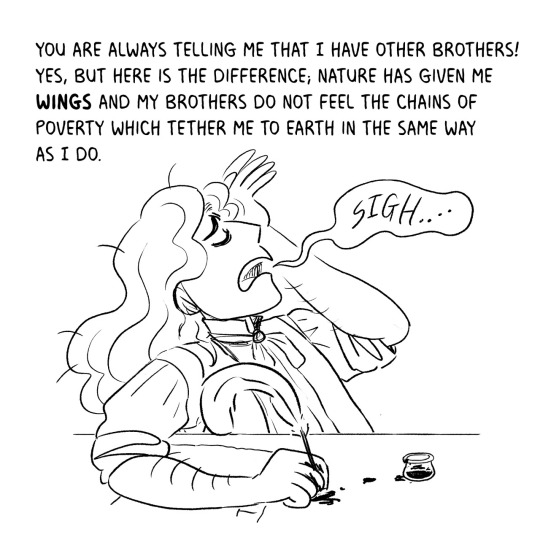
Camille spending the majority of his time away from his family seems to have ended up in him not knowing his siblings all that well, as we in 1792 find a letter where his father has to tell him the name of his brothers as well as their occupations (cited in Camille Desmoulins, a biography (1909) by Violet Methley):
You ask me, my son, for the name of your brother, Du Bucquoy, as well as for that of Semery. The former is called Armand Jean Louis Domitille, who was born on May 5th, 1765. For the past seven years he has served in the late Royal Roussillon cavalry regiment, or the 11th Regiment of the Army of the Midi, and which I believe is either in the interior at Saumur or at Saint-Jean-d'Angely, for I have had no news of him for the last twelve months. The latter is named Lazare Nicolas Norbert Félicité, born on June 6th, 1769, and for the past two years in the loth Battalion of Chasseurs, late Gevaudan, with the Army of the North, in which he shows much zeal. He tells me in his last letter that he is a forlorn sentinel in a wood, and congratulates you on the birth of a son. As for me, I also am married. My wife is a musket, and I take greater care of her than of myself.
On February 8 1793 Lucile has written in her diary: ”C(amille’s) brother came. We had dinner at Madame Brune’s.” In a letter dated July 9 1793 Camille shares more details on his brothers, who by now are both serving in the revolutionary army. These parts got censored when the letter was published for the first time in 1836, and restored in Hervé Leuwers’ biography:
I have received unfortunate news of my brother, who has been lost to drunkenness and expelled from his regiment. I don't know if he wrote to you about his mishap. He has not dared to write to me about it, and he is right in not to. It is most unworthy that I should take an interest in him, and I am really angry that he has taken my name, which he has sullied in the army. Nevertheless, I had advised him to pour water into his wine. I don't know what has become of him since he was forced to resign as an officer. His conduct might have caused you grief under the old regime, but it is a duty that a family of republicans and good men consists of nothing but those who are republicans and good men. […] I am very sorry that Sémery was killed. I would have had no reason to be ashamed of him, and I would have procured for him a speedy promotion of which he proved himself worthy, for things are going well and will be better.
Soon thereafter, Camille does however find out the information regarding his youngest brother’s death is false, whereupon he writes a new letter to his father:
I am very sorry to have written to you that my brother Sémery would have died fighting for his homeland. I had no other certainty of a loss so grievous to you than the indication of his long silence, and I eagerly laid hold of your doubts of his death to fix my hopes upon them. May he be returned to you by the enemies into whose hands he may have fallen captive. I feel even more now, when I see my son, how sensitive this blow must have been to your heart.
Sémery had indeed not died in battle, but been captured at the siege of Maestricht. According to La jeunesse de Camille Desmoulins (1908) he was released after three years. In 1802 he was admitted to the 27th legion of gendarmerie on foot, and was serving in Piémont à la Chiesa as gendarme of the Stura company when he died by an accident in January 1811. The other brother, Dubucquoi, did however die in Vendée in 1793, I’ve not discovered on which date.
As for the two surviving sisters, we seemingly only know that they got married. According to geneanet, the eldest sister Marie Élisabeth Émilie Toussaint married one Théodore Morey in Guise, December 25 1793, while Anne Clotilde Pélagie Marie married Simon Isidore Lemoine in the same town on June 5 1794. Leuwers cites a document showing the two couples were still together by March 4 1797. He adds that both husbands were gendarmes and their wives left Guise to be with them at their posts. Somewhere after 1797 Marie Élisabeth Émilie Toussaint got remarried to one Théodore Lagrange before dying in Paris on December 20 1839, with one Antoine Nicolas Desmoulins as witness. When and where Anne Clotilde Pélagie Marie died I’ve not been able to discover.
#camille desmoulins#desmoulins#frev#ask#camille not knowing his brothers’ names tho… 🫢😆#tho tbf i’m not sure if i know my brothers’ middle names either…
54 notes
·
View notes
Text
"Şu anda kaç yaşında olursanız olun. Başarı için veya istediğiniz şeyin peşinden gitmek için asla çok genç veya çok yaşlı değilsiniz. İşte farklı yaşlarda büyük işler başarmış kişilerin kısa bir listesi
1) Helen Keller, 19 aylıkken sağır ve kör oldu. Ancak bu onu durdurmadı. Bachelor of Arts derecesi alan ilk sağır ve kör kişiydi.
2) Mozart klavye ve kemanda zaten yetenekliydi; 5 yaşından itibaren beste yapmaya başladı
. 3) Shirley Temple, "Bright Eyes" filminde film yıldızı olduğunda 6 yaşındaydı.
4) Anne Frank, Anne Frank'ın günlüğünü yazdığında 12 yaşındaydı.
5) Magnus Carlsen 13 yaşında satranç büyükustası oldu.
6) Nadia Comăneci, 14 yaşındayken Olimpiyatlarda yedi tam 10.0 puan alan ve üç altın madalya kazanan bir Rumen jimnastikçiydi.
7) Tenzin Gyatso, Kasım 1950'de, 15 yaşındayken resmen 14. Dalai Lama olarak tanındı.
8) Futbolun süperstarı Pele, Brezilya ile 1958'de Dünya Kupası'nı kazandığında 17 yaşındaydı.
9) Elvis 19 yaşındayken bir süperstardı.
10) John Lennon 20 yaşındaydı ve Paul Mcartney, Beatles 1961'de ilk konserini verdiğinde 18 yaşındaydı.
11) Jesse Owens, 1936'da Berlin'de 4 altın madalya kazandığında 22 yaşındaydı.
12) Beethoven 23 yaşındayken piyano virtüözüydü.
13) Issac Newton, Philosophiæ Naturalis Principia Mathematica'yı 24 yaşında yazdı.
14) Roger Bannister, 4 dakikalık mil rekorunu kırdığında 25 yaşındaydı.
15) Albert Einstein, görelilik kuramını yazdığında 26 yaşındaydı
. 16) Lance E. Armstrong, Tour de France'ı kazandığında 27 yaşındaydı.
17) Michelangelo, 28 yaşındayken en büyük heykellerden ikisi olan "Davut" ve "Pieta"yı yarattı.
18) Büyük İskender, 29 yaşına geldiğinde antik çağın en büyük imparatorluklarından birini yaratmıştı. dünya
19) JK Rowling, Harry Potter'ın ilk taslağını bitirdiğinde 30 yaşındaydı.
20) Amelia Earhart, Atlas Okyanusu'nu tek başına geçen ilk kadın olduğunda 31 yaşındaydı.
21) Oprah, türünün en yüksek reytingli programı haline gelen talk show'una başladığında 32 yaşındaydı.
22) Edmund Hillary, Everest Dağı'na tırmanan ilk erkek olduğunda 33 yaşındaydı.
23) Martin Luther King Jr., "Bir Rüya Görüyorum" konuşmasını yazdığında 34 yaşındaydı.
24) Marie Curie, Fizik dalında Nobel Ödülü'ne aday gösterildiğinde 35 yaşındaydı
. 25) Wright kardeşler, Orville (32) ve Wilbur (36), dünyanın ilk başarılı uçağını icat ettiler ve inşa ettiler ve ilk kontrollü, motorlu ve sürdürülebilir havadan ağır insan uçuşunu gerçekleştirdiler.
26) Vincent Van Gogh, neredeyse hiç tanınmadan öldüğünde 37 yaşındaydı, ancak bugün resimleri milyonlarca dolar değerinde.
27) Neil Armstrong, Ay'a ilk ayak basan insan olduğunda 38 yaşındaydı.
28) Mark Twain, "Tom Sawyer'ın Maceraları"nı yazdığında 40, "Huckleberry Finn'in Maceraları"nı yazdığında ise 49 yaşındaydı.
29) Kristof Kolomb, Amerika'yı keşfettiğinde 41 yaşındaydı.
30) Rosa Parks, otobüs şoförünün beyaz bir yolcuya yer açmak için koltuğunu vermesini söylemesine uymayı reddettiğinde 42 yaşındaydı.
31) John F. Kennedy, Amerika Birleşik Devletleri Başkanı olduğunda 43 yaşındaydı
. 32) Henry Ford, Ford T piyasaya çıktığında 45 yaşındaydı.
33) Suzanne Collins, "Açlık Oyunları"nı yazdığında 46 yaşındaydı
. 34) Charles Darwin, Türlerin Kökeni adlı kitabı piyasaya çıktığında 50 yaşındaydı.
35) Leonardo Da Vinci, Mona Lisa'yı çizdiğinde 51 yaşındaydı.
36) Abraham Lincoln, başkan olduğunda 52 yaşındaydı.
37) Ray Kroc McDonald's Franchise'ını satın aldığında ve bunu benzeri görülmemiş seviyelere taşıdığında 53 yaşındaydı.
38) Dr. Seuss "Şapkalı Kedi"yi yazdığında 54 yaşındaydı.
40) Chesley "Sully" Sullenberger III, 2009 yılında US Airways Flight 1549'u Hudson Nehri'nde başarıyla suya indirdiğinde 57 yaşındaydı. Uçaktaki 155 yolcunun tamamı hayatta kaldı.
41) Albay Harland Sanders, KFC Franchise'ını kurduğunda 61 yaşındaydı.
42) JRR Tolkien, Yüzüklerin Efendisi kitapları çıktığında 62 yaşındaydı
. 43) Ronald Reagan, ABD Başkanı olduğunda 69 yaşındaydı.
44) Jack Lalane, 70 yaşında kelepçelendi, zincirlendi ve 70 kürekli tekneyi çekti.
45) Nelson Mandela, Başkan olduğunda 76 yaşındaydı”
— Pablo
12 notes
·
View notes
Text

Wonderful Photograph of Notre-Dame de Paris by Julia-Anna Gospodarou
Notre-Dame de Paris (meaning "Our Lady of Paris"), often referred to simply as Notre-Dame, is a medieval Catholic cathedral on the Île de la Cité (an island in the River Seine), in the 4th arrondissement of Paris, France. The cathedral, dedicated to the Virgin Mary ("Our Lady"), is considered one of the finest examples of French Gothic architecture. Several attributes set it apart from the earlier Romanesque style, including its pioneering use of the rib vault and flying buttress, its enormous and colourful rose windows, and the naturalism and abundance of its sculptural decoration. Notre-Dame is also exceptional for its three pipe organs (one historic) and its immense church bells.
The construction of the cathedral began in 1163 under Bishop Maurice de Sully and was largely completed by 1260, though it was modified in succeeding centuries. In the 1790s, during the French Revolution, Notre-Dame suffered extensive desecration; much of its religious imagery was damaged or destroyed. In the 19th century, the cathedral hosted the coronation of Napoleon and the funerals of many of the French Republic's presidents. The 1831 publication of Victor Hugo's novel Notre-Dame de Paris (English title: The Hunchback of Notre-Dame) inspired interest which led to restoration between 1844 and 1864, supervised by Eugène Viollet-le-Duc. On 26 August 1944, the Liberation of Paris from German occupation was celebrated in Notre-Dame with the singing of the Magnificat. Beginning in 1963, the cathedral's façade was cleaned of soot and grime. Another cleaning and restoration project was carried out between 1991 and 2000, A fire in April 2019 caused catastrophic damage, closing the cathedral for repairs and rebuilding over a 5 year period, the fully restored cathedral reopened in December 2024
Image by Juila-Anna Gospodarou
18 notes
·
View notes
Text

CONOCE AL PERSONAJE: 02.
Michelle Wilson | Búsqueda de tramas 01.
1. Frase que te defina.
«No pasa nada».
2. 5 cosas sin las que no podrías vivir.
- Mi pisito Art Deco. - Salir a cantar y bailar. - Toquetear a la gente. If you know, you know. - IRIS, la IA es imprescindible. - Cotilleo, charfardeo y golismeo. ¡CHISMES, CHISMES!
3. La canción de la que nunca te cansas.
Bloody Mary de Las Ketchup
4. ¿Qué haces cuando estás ansioso para calmarte?
Me tomo un Bloody Mary, por favor.
5. ¿Cuál es la lección más valiosa que has aprendido este último año de tu vida?
No te acerques a los Yetis. Todos son malos pero especialmente los notarios.
6. Dale un consejo a tu yo de 18 años.
Tranquila que te vas a casar.
7. Si pudieras extinguir una quimera para siempre, ¿cuál sería? ¿Y por qué el Blop?
YETIS, que no existan más. ¿Quizá tenga trauma con Yetis? Quizá.
8. Si se te presentara el genio de la lámpara, ¿qué tres deseos le pedirías?
- Que vuelva mi hermano - Que vuelva Luke - Que vuelva Ricky (Estoy muy triste ahora).
9. ¿Hay alguien a quien admires profundamente? De ser así, ¿quién es y por qué?
James, veterano de la vida, compañero de disgustos. Sully, porque sólo él puede apreciar la belleza de unas pegatinas. Mi prima Charlie, porque no sería la misma si no me hubiera ganado treinta y siete veces al dominó en un día. Atlas, por influencer (gracias por abrir la veda <3)
10. Dinos una cosa sobre ti que la gente asume erróneamente que te define o que tienes.
Que soy tontuela porque hablo mucho. Sólo soy tontuela a secas ¿vale?
8 notes
·
View notes
Text




The de Chagny Siblings
"Philippe Georges Marie Comte de Chagny was just forty-one years of age. He was a great aristocrat and a good-looking man, above middle height and with attractive features, in spite of his hard forehead and his rather cold eyes. He was exquisitely polite to the women and a little haughty to the men, who did not always forgive him for his successes in society. He had an excellent heart and an irreproachable conscience."
"Euphroisine Marguerite de Chagny, though unemployed, carried herself with a breezy confidence. She loved nothing more than to travel and invest in stocks, finding her own ways to enjoy life and sustain herself. Her tall, slender figure and mischievous almond-shaped eyes gave her an air of independence that was hard to pin down. Though in her spinster years, she still possessed the lightness of spirit of someone far younger, always ready for the next adventure or opportunity that came her way."
"Hortense Cécile de Chagny was a quiet and unassuming figure, her demure presence often overshadowed by her siblings. Yet beneath her gentle exterior lay a sharp mind and a burning ambition. At her transition to thirty years of age, she had already begun to make her mark as a writer and an emerging voice in politics. Her fair complexion and soft golden curls gave her an almost ethereal beauty, though it was her calm, steady gaze that hinted at the strength within her. Reserved in manner, she spoke with a sincerity that was impossible to ignore."
"The shyness of the sailor-lad—I was almost saying his innocence—was remarkable. Raoul Vicomte de Chagny seemed to have but just left the women’s apron-strings. As a matter of fact, petted as he was by his two sisters and his old aunt, he had retained from this purely feminine education manners that were almost candid and stamped with a charm that nothing had yet been able to sully. He was a little over twenty-one years of age and looked eighteen. He had a small, fair mustache, beautiful blue eyes and a complexion like a girl’s."

I'm returning to the sims 3 aka second best sims game after the sims 2 so Ifl I need to recreate the POTO sillies on it. This time I think I went hard with the de Chagny siblings by giving them their dad (Philibert) and their mom for more consistent genetics which dw I toggled kill them off right at the beginning. Also includes the two unnamed sisters because honestly they deserve some attention. I also made Christine prior to this but have yet to take a proper screenshot.
And I am the realest Raoul's muscles truther!!!!
#phantom of the opera#alw phantom#gaston leroux#leroux phantom#sims 3#raoul de chagny#philippe de chagny#de Chagny#the sims 3#ts3 screenshots#ts3#le fantome de l'opera#poto#phantomoftheopera#the sims#Sims 3 POTO
5 notes
·
View notes
Text

Monument funéraire baroque : Rachel de Cochefilet, duchesse de Sully, orante sur son tombeau attenant à l’église Notre-Dame de Nogent-le-Rotrou, aux côtés de son mari — feutre fin Pigment Liner 0.2, carnet nº 136, 4 avril 2023
#2023#monument#tombe#tombeau#baroque#orante#sculpture#nogent le rotrou#perche#eure et loir#carnet 136#feutre noir#feutre fin#priere#sully#rachel de cochefilet#femme#face
13 notes
·
View notes
Text
Selected Poems of Gabriela Mistral, translated by Ursula K. Le Guin
Winning the Nobel Prize in Literature is generally regarded as a great honour. But the prize was never awarded to authors such as Leo Tolstoy, Henry James, Anton Chekhov, Mark Twain, Henrik Ibsen, Marcel Proust, James Joyce, Jorge Luis Borges and Vladimir Nabokov. On the other hand, how many people still read the works of Sully Prudhomme (first Nobel Prize for Literature in 1901), Giosuè Carducci (1906), Verner von Heidenstam (1916), Frans Eemil Sillanpää (1939) or Johannes Vilhelm Jensen (1944)?
Gabriela Mistral was the first Latin American author to receive the Nobel Prize in Literature, but when Literature Stack Exchange suggested a Gabriela Mistral reading challenge, I had to overcome my prejudice against what seemed one of those long forgotten Nobel laureates. It helped that Ursula K. Le Guin had published a large selection of Mistral’s poems with her own English translations in 2003. Even though Le Guin is best known for her science fiction and fantasy novels, she was also a poet. This volume, published by the University of New Mexico Press, is the largest selection of Mistral’s poems ever published in English and fills the gap left by earlier translations, by Langston Hughes (1957) and Doris Dana (1971), which have gone out of print.
Le Guin selected poems from five of Mistral’s published volumes: Desolación (1922), Ternura: canciones de niños (1924), Tala (1938), Lagar (1954) and the posthumously published Poema de Chile (1967). She also included four unpublished poems. The Spanish text and Le Guin’s translation are usually printed on facing pages, except when the lines are short enough to print both text side by side on the same page. Le Guin did not attempt to reproduce the metre and only reproduced the rhyme if it came without forcing. She also included some of the dark, difficult poems from Mistral’s last two books, but the admits that the choice was otherwise subjective.
Le Guin’s translations capture the spirit of Mistral’s poems very well. In order to achieve this, the translations can’t always be literal. Sometimes, it even seems as if Le Guin is taking liberties, for example when she translates estanque as millpond (in “El amor que calla”, pages 12–13) or al roce del cilicio as at the touch of the lash (in “Íntima”, pages 14–15) or “Habla con dejo” (literally: “[She] speaks with [an] accent”) as “She chatters” (in “La extranjera”, pages 192–193).
Mistral’s work is influenced by her Catholicism, which is reflected both in some of the poems’ themes and in metaphors, even in poems that are not religious. That does not mean you need to be religious to appreciate her poetry.
The book would have benefited from more careful editing and proofreading, especially the first part. Typographical errors include “I stretched our my arms” (page 29), “a mis casa” and “infinto” (both in the second stanza of “Desolación”, page 40) and “Roció” (the title of the poem “Rocío”, page 57).
Gabriela Mistral: Selected Poems of Gabriela Mistral. Translated by Ursula K. Le Guin. Mary Burritt Christiansen Poetry Series. University of New Mexico Press, 2003 (431 pages). ISBN 9780826328199.
Review submitted by Tsundoku.
2 notes
·
View notes
Link
10 notes
·
View notes
Text
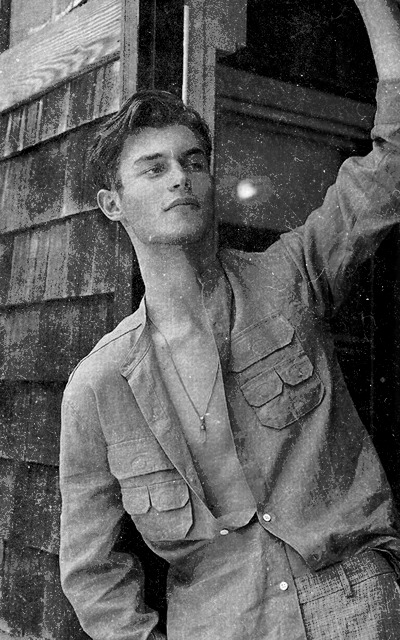

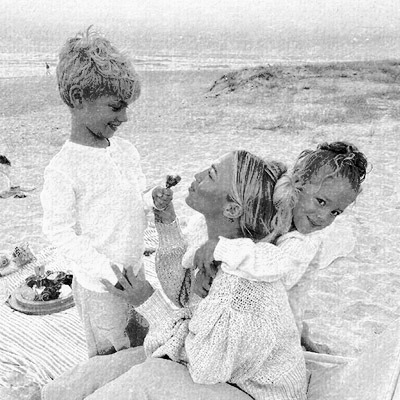
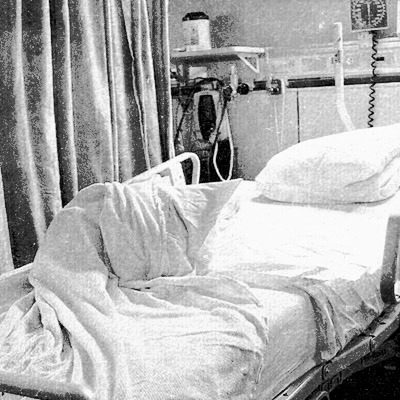

- suggestion de faceclaim pour le pré-lien big brother is watching you
tw - mention de fausse couche, maladie (cancer), décès, deuil, prise de substances / comportement autodestructeur (naia)
kenan, c'est l'aîné de la famille, ce grand frère avec qui naïa n'a que trois années d'écart. à la fois partenaire de bêtises, confident et protecteur, il est devenu un véritable pilier de son existence, kenan. tous les deux ont noué au fil des années cette relation privilégiée qu'ils ont réussi à préserver, à cultiver même. parce que même si les années passent et ne se ressemblent pas, il est toujours la première personne auprès duquel elle se réfugie quand elle va mal, quand elle a besoin de réconfort. du moins, c'est ce qu'elle faisait jusqu'au décès de maman, naïa. parce que depuis le décès de maman, elle a changé du tout au tout. un changement radical qui lui fait peur à kenan parce qu'il ne reconnaît plus sa petite sœur, parce qu'il voit bien également qu'il n'arrive pas à honorer cette promesse faite à leur mère - celle de prendre soin de sa petite sœur.
les dolan, c'est une famille originaire de barcelone qui est formée autour du couple de sully et summer. un couple partageant le même amour doux et sincère depuis de nombreuses années. un couple ayant réussi à passer à travers les hauts, mais aussi les bas ensemble. c'est presque naturellement qu'ils ont souhaité agrandir leur famille. et c'est ce qu'ils ont réussi à faire en accueillant leur premier enfant, kenan. rapidement après la naissance de kenan, summer est tombé à nouveau enceinte d'une petite fille, ena. une petite fille qui n'aura jamais eu l'occasion de pousser ses premiers cris. deux années à pleurer la perte de ce petit ange qu'ils n'auront jamais eu l'occasion de côtoyer, deux années à espérer et également se battre pour parvenir à agrandir de nouveau leur famille. et c'est chose faite avec celle qu'ils voient comme leur petit miracle, naïa. (...) et alors qu'ils semblent tout pour être heureux, tout bouscule en mai 2022 - ce fameux jour où maman leur a appris souffrir d'un cancer du sein. et si maman a peur, elle ne leur montre rien. elle reste cette femme digne et forte qui décide de faire de son mieux pour se battre pour son mari, pour ses deux enfants qu'elle a tant désiré. et si elle est affaiblie par les chimiothérapies, elle ne montre rien et demeure cette femme joviale et blagueuse qu'ils ont toujours connu. jusqu'à que tout s'effondre une seconde fois en octobre 2023. parce que summer a perdu son combat face à la maladie. et sans elle, rien ne semble plus avoir de sens. parce que sans summer il y a ce fossé qui se creuse chaque jour un peu plus au sein de la famille dolan. une famille où chacun semble dépérir à sa manière.
#forum rpg#forums#rpg francophone#forumactif#rpg français#avatars rpg#faceclaim rpg#ressource rpg#pub rpg#kit butler#kit butler avatars
5 notes
·
View notes
Text
With Avatar back in the news, I’ve come to the realization that the SJW Brigade does hate Mary Sues--they just call them Mighty Whiteys.

Here we have Jake Sully. As presented to us, he’s a skilled Marine veteran that undergoes three months of intensive training under the Na’vi (it’s mentioned in the narrative that he’s overworking himself and frequently almost at the point of burning out). By the end, he’s able to tame and ride Toruk, the most feared predator in the Na’vi biome, which makes him de facto leader of the united tribes. So, the criticism goes, he’s better at being a Na’vi than the Na’vi are. After all, the Na’vi train from birth to do Na’vi shit, so how could someone who only stepped foot on the planet three months ago possibly be more skilled at it than them?

This is Rey Somethingorother. She has never touched a lightsaber before, but within moments of picking one up, she’s able to defeat Kylo Ren, who has been trained in the Jedi arts (including lightsabering, obvs) pretty much since birth. Three days later, with no more training than listening to Luke Skywalker tell her the Jedi sucks, she’s again able to fight on par with Kylo Ren, defeating many of Snoke’s personal bodyguard, who you’d expect to somewhat know what they’re doing. She’s also able to lift a quarry’s worth of rocks; recall Luke struggled to lift an X-wing long after the point in his training where Rey was (namely, “Here’s what the Force is, since you’ve never even heard of it before.”)
So, you tell me: how is it unbelievable that after three months of training, Jake is pretty good at being a Na’vi, but Rey is a Jedi Knight in under five minutes and it’s sexist to find that credulous?
43 notes
·
View notes
Text






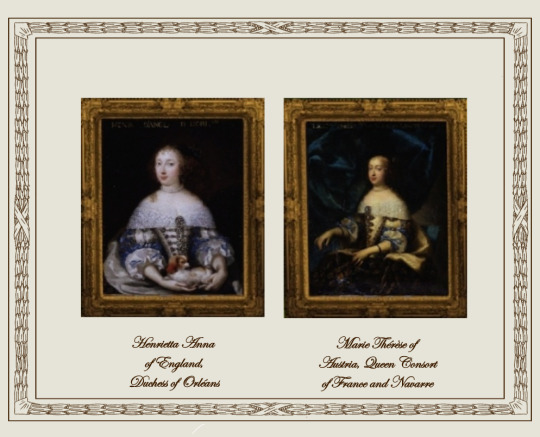
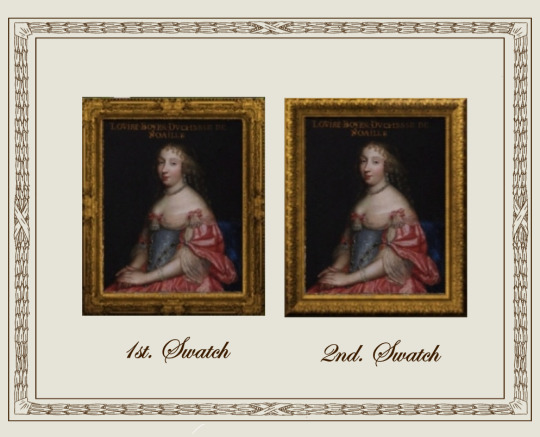
Louis XIV's Gallery of Beauties
A retexture by La Comtesse Zouboff — Original Mesh by @thejim07
This set of 20 portraits was comissioned by the king himself in the 1650s to Charles and Henri Beaubrun (except for a portrait of Henrietta Anna of England, Comissioned to Nicolas Mignard) The portraits comprises the queen, royal princesses and ladies of the court. They hanged at the king's appartments at Versailles. In the 1670s the paintings were progressively relegated to the king's minor residences, but in 1837, Louis-Philippe, King of the French turned Versailles into a museum and rejoined the paintings, in the Louis XIV Rooms, where they remain.
The set includes 20 portraits, with the original frame swatches, fully recolorable. The portraits are of:
Anne Genèvieve de Bourbon, Duchess d'Estouteville and Longueville
Françoise-Athénaïs de Rochechouart (later, Marquise de Montespan)
Anna Martonozzi, Princess of Conti
Anne Louise Boyer, Duchess of Noailles
Anne Marie Gonzaga, Countess Palatine
Anne de Rohan-Chabot, Princess de Soubise
Catherine Henriette d'Harcourt, Duchess d'Arpajon
Catherine de Neuville, Countess d'Armagnac
Charlotte Catherine de Gramont, Proncess of Monaco
Charlotte Isabelle Angélique de Montmorency-Bouteville, Duchess of Mecklenburg-Schwerin
Elizabeth of Orléans, Duchess of Guise and Joÿeuse
Françoise Madeleine d'Orléans (née de Valois) Duchess of Savoy
Françoise Mignot, Mareschalle of l'Hospital
Françoise de Neufville, Duchess of Chaulnes
Gabrielle-Louise de Saint-Simon, Duchess of Brissac
Henrietta Anna of England, Duchess of Orléans
Madeleine-Charlotte d'Albert-d'Ailly, Duchess of Foix
Marguerite Louise d'Orléans, Grand Duchess of Tuscany
Marguerite-Louise-Suzanne de Béthune-Sully, Countess of Gyche
Marie Thérèse of Austria, Queen Consort of France and Navarre
Found under Decor > Paintings for 940 §
Retextured from the "portrait of Anne Marie Louise d'Orléans", found here
Table, torcheres and floor by @thejim07
Rest of the decor by @joojconverts

Drive
(Sims3pack | package)
(Useful tags)
@joojconverts @ts3history @ts3historicalccfinds @deniisu-sims @katsujiiccfinds
-------------------------------------------------------
#the sims 3#ts3#sims 3 cc#portrait#s3cc#sims 3#sims 3 download#sims 3 cc finds#palace of versailles#sims 3 decor#wall decor
44 notes
·
View notes
Text
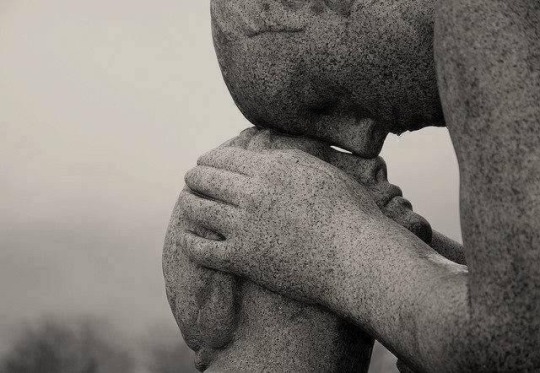
Guy de Maupassant : Le baiser. Texte publié dans Gil Blas du 14 novembre 1882, sous la signature de Maufrigneuse. Il a également été repris dans La Vie populaire du 10 avril 1884.
Mis en ligne le 5 novembre 1998.
Dialogues initiés par : tiret - guillemet
LE BAISER
Ma chère mignonne,
Donc, tu pleures du matin au soir et du soir au matin, parce que ton mari t’abandonne ; tu ne sais que faire, et tu implores un conseil de ta vieille tante que tu supposes apparemment bien experte. Je n’en sais pas si long que tu crois, et cependant je ne suis point sans doute tout à fait ignorante dans cet art d’aimer ou plutôt de se faire aimer, qui te manque un peu. Je puis bien, à mon âge, avouer cela.
Tu n’as pour lui, me dis-tu, que des attentions, que des douceurs, que des caresses, que des baisers. Le mal vient peut-être de là ; je crois que tu l’embrasses trop.
Ma chérie, nous avons aux mains le plus terrible pouvoir qui soit : l’amour. L’homme, doué de la force physique, l’exerce par la violence. La femme, douée du charme, domine par la caresse. C’est notre arme, arme redoutable, invincible, mais qu’il faut savoir manier.
Nous sommes, sache-le bien, les maîtresses de la terre. Raconter l’histoire de l’Amour depuis les origines du monde, ce serait raconter l’homme lui-même. Tout vient de là, les arts, les grands événements, les mœurs, les coutumes, les guerres, les bouleversements d’empires.
Dans la Bible, tu trouves Dalila, Judith ; dans la Fable, Omphale, Hélène ; dans l’Histoire, les Sabines, Cléopâtre et bien d’autres.
Donc, nous régnons, souveraines toutes-puissantes. Mais il nous faut, comme les rois, user d’une diplomatie délicate.
L’Amour, ma chère petite, est fait de finesses, d’imperceptibles sensations. Nous savons qu’il est fort comme la mort ; mais il est aussi fragile que le verre. Le moindre choc le brise et notre domination s’écroule alors, sans que nous puissions la réédifier.
Nous avons la faculté de nous faire adorer, mais il nous manque une toute petite chose, le discernement des nuances dans la caresse, le flair subtil du TROP dans la manifestation de notre tendresse. Aux heures d’étreintes, nous perdons le sentiment des finesses, tandis que l’homme que nous dominons reste maître de lui, demeure capable de juger le ridicule de certains mots, le manque de justesse de certains gestes. Prends bien garde à cela, ma mignonne : c’est le défaut de notre cuirasse, c’est notre talon d’Achille.
Sais-tu d’où vient notre vraie puissance ? Du baiser, du seul baiser ! Quand nous savons tendre et abandonner nos lèvres, nous pouvons devenir des reines.
Le baiser n’est qu’une préface, pourtant. Mais une préface charmante, plus délicieuse que l’œuvre elle-même ; une préface qu’on relit sans cesse, tandis qu’on ne peut pas toujours... relire le livre. Oui, la rencontre des bouches est la plus parfaite, la plus divine sensation qui soit donnée aux humains, la dernière, la suprême limite du bonheur. C’est dans le baiser, dans le seul baiser qu’on croit parfois sentir cette impossible union des âmes que nous poursuivons, cette confusion des cœurs défaillants.
Te rappelles-tu les vers de Sully Prudhomme :
Les caresses ne sont que d’inquiets transports,
Infructueux essais du pauvre amour qui tente
L’impossible union des âmes par le corps.
Une seule caresse donne cette sensation profonde, immatérielle des deux êtres ne faisant plus qu’un, c’est le baiser. Tout le délire violent de la complète possession ne vaut cette frémissante approche des bouches, ce premier contact humide et frais, puis cette attache immobile, éperdue et longue, si longue ! de l’une à l’autre.
Donc, ma belle, le baiser est notre arme la plus forte, mais il faut craindre de l���émousser. Sa valeur, ne l’oublie pas, est relative, purement conventionnelle. Elle change sans cesse suivant les circonstances, les dispositions du moment, l’état d’attente et d’extase de l’esprit.
Je vais m’appuyer sur un exemple.
Un autre poète, François Coppée, a fait un vers que nous avons toutes dans la mémoire, un vers que nous trouvons adorable, qui nous fait tressaillir jusqu’au cœur.
Après avoir décrit l’attente de l’amoureux dans une chambre fermée, par un soir d’hiver, ses inquiétudes, ses impatiences nerveuses, sa crainte horrible de ne pas LA voir venir, il raconte l’arrivée de la femme aimée qui entre enfin, toute pressée, essoufflée, apportant du froid dans ses jupes, et il s’écrie :
Oh ! les premiers baisers à travers la voilette !
N’est-ce point là un vers d’un sentiment exquis, d’une observation délicate et charmante, d’une parfaite vérité ? Toutes celles qui ont couru au rendez-vous clandestin, que la passion a jetées dans les bras d’un homme, les connaissent bien ces délicieux premiers baisers à travers la voilette, et frémissent encore à leur souvenir. Et pourtant ils ne tirent leur charme que des circonstances, du retard, de l’attente anxieuse ; mais, en vérité, au point de vue purement, ou, si tu préfères, impurement sensuel, ils sont détestables.
Réfléchis. Il fait froid dehors. La jeune femme a marché vite ; la voilette est toute mouillée par son souffle refroidi. Des gouttelettes d’eau brillent dans les mailles de la dentelle noire. L’amant se précipite et colle ses lèvres ardentes à cette vapeur de poumons liquéfiée.
Le voile humide, qui déteint et porte la saveur ignoble des colorations chimiques, pénètre dans la bouche du jeune homme, mouille sa moustache. Il ne goûte nullement aux lèvres de la bien-aimée, il ne goûte qu’à la teinture de cette dentelle trempée d’haleine froide.
Et pourtant, nous nous écrions toutes, comme le poète :
Oh ! les premiers baisers à travers la voilette !
Donc la valeur de cette caresse étant toute conventionnelle, il faut craindre de la déprécier.
Eh bien, ma chérie, je t’ai vue en plusieurs occasions très maladroite. Tu n’es pas la seule, d’ailleurs ; la plupart des femmes perdent leur autorité par l’abus seul des baisers, des baisers intempestifs. Quand elles sentent leur mari ou leur amant un peu las, à ces heures d’affaissement où le cœur a besoin de repos comme le corps ; au lieu de comprendre ce qui se passe en lui, elles s’acharnent en des caresses inopportunes, le lassent par l’obstination des lèvres tendues, le fatiguent en l’étreignant sans rime ni raison.
Crois-en mon expérience. D’abord, n’embrasse jamais ton mari en public, en wagon, au restaurant. C’est du plus mauvais goût ; refoule ton envie. Il se sentirait ridicule et t’en voudrait toujours.
Méfie-toi surtout des baisers inutiles prodigués dans l’intimité. Tu en fais, j’en suis certaine, une effroyable consommation.
Ainsi je t’ai vue un jour tout à fait choquante. Tu ne te le rappelles pas sans doute.
Nous étions tous trois dans ton petit salon, et, comme vous ne vous gêniez guère devant moi, ton mari te tenait sur ses genoux et t’embrassait longuement la nuque, la bouche perdue dans les cheveux frisés du cou.
Soudain tu as crié :
— Ah le feu...
Vous n’y songiez guère ; il s’éteignait. Quelques tisons assombris expirants rougissaient à peine le foyer.
Alors il s’est levé, s’élançant vers le coffre à bois où il saisit deux bûches énormes qu’il rapportait à grand’peine, quand tu es venue vers lui les lèvres mendiantes, murmurant :
— Embrasse-moi.
Il tourna la tête avec effort en soutenant péniblement les souches. Alors tu posas doucement, lentement, ta bouche sur celle du malheureux qui demeura le col de travers, les reins tordus, les bras rompus, tremblant de fatigue et d’effort désespéré. Et tu éternisas ce baiser de supplice sans voir et sans comprendre.
Puis, quand tu le laissas libre, tu te mis à murmurer d’un air fâché :
— Comme tu m’embrasses mal.
Parbleu, ma chérie !
Oh ! prends garde à cela. Nous avons toutes cette sotte manie, ce besoin inconscient et bête de nous précipiter aux moments les plus mal choisis : quand il porte un verre plein d’eau, quand il remet ses bottes, quand il renoue sa cravate, quand il se trouve enfin dans quelque posture pénible, et de l’immobiliser par une gênante caresse qui le fait rester une minute avec un geste commencé et le seul désir d’être débarrassé de nous.
Surtout ne juge pas insignifiante et mesquine cette critique. L’amour est délicat, ma petite : un rien le froisse ; tout dépend, sache-le, du tact de nos câlineries. Un baiser maladroit peut faire bien du mal.
Expérimente mes conseils.
Ta vieille tante,
Colette.
3 notes
·
View notes
Text
i've listened to MAG 158-159-160 in a perfect setting and just want to talk a bit about it
tw: animal death (rat) and a disturbing thing about it (it's the paragraph following me talking about mag 160 if you want to skip it, it really is not relevant)
spoilers for TMA season 4 finale
my experience listening to tma, there you go
i currently live in Paris. the autumn here lets the sinuous paved streets gleaming after the rain; the night falls early, and you quickly happen to walk under the yellow light of old street lamps, their glow slightly dimed by fog; when you know where to go, some places are almost devoid of people — and the cars are very rare. the sounds are mostly the Seine, the Canal Saint-Martin, your feet on the pavement, the wind, distant sounds from the city filtered by your headphones.
so i was walking in the 4th arrondissement, between Pont Marie, Sully Morland and l'île Saint-Louis, crossing some bridges, drinking hot tea as Martin dropped his actual first f-bomb, as Basira promised Daisy to kill her — and just couldn't stop wandering, as Jon entered the Lonely, searched for Martin, forced a statement out of Peter Lukas
(something funny did happened. i, well, gasped — really gasped — when Martin said “i really loved you”, but just had crossed path with a man, who turned back and stared at me, clearly concerned, and oh what a story like tma made me do)
(i told him “oh, pardon, c'est rien, désolé” and simply walked away)
then, mag 160; finally, i knew what the cows were about, why the sentence "hello Jon, apologies for the deception" is indeed iconic, and and i just fell into Jonah's clutches throughout his whole monologue.
when he was explaining the whole plan, i happened to walk on the corpse of a dead rat; they are not quite unusual here, though myself do not see rats often, actually; it was so bizarre, to feel its softness, and i did have an immediate body reaction, a shudder, and was a bit lightheaded right after; but it was thematically fitting. besides, it just reinforced the impression that it was just me, the town, and Jonah Magnus. a very... intimate journey, somehow
and then. well, the end (... no pun intended) happened. oh fuck. i had almost reach the Hôtel de Ville, and from where i was (les quais de Seine) i could see the very end of l'île Saint-Louis, where i was half an hour before, listening to Peter Lukas' statement; from there, you actually have a large view — you see all the sky. and oh. i actually stopped walking, and just stared. and it was brilliant
really, i don't think i could have had a better experience (besides, i don't walk enough these days, and doing so in Paris is always a good idea because the city is so cool)
anyway, i just wanted to talk about it, put it somewhere, because it was sick bordel vraiment incroyable, and it's great to commit it to memory
(there are. so, so, so much things at the end of the season. it is a very strong finale, probably my favourite, and i can't wait to finally listen to s5, though i do not want their story to end and leave them behind) (i won't, but... you know how it is)
#the ceaseless watcher made me write the beginning that way#and i don't even KNOW if it's correct#mag 158#mag 159#mag 160#tma s4 spoilers#the magnus archives season 4#ethnol & tma
5 notes
·
View notes